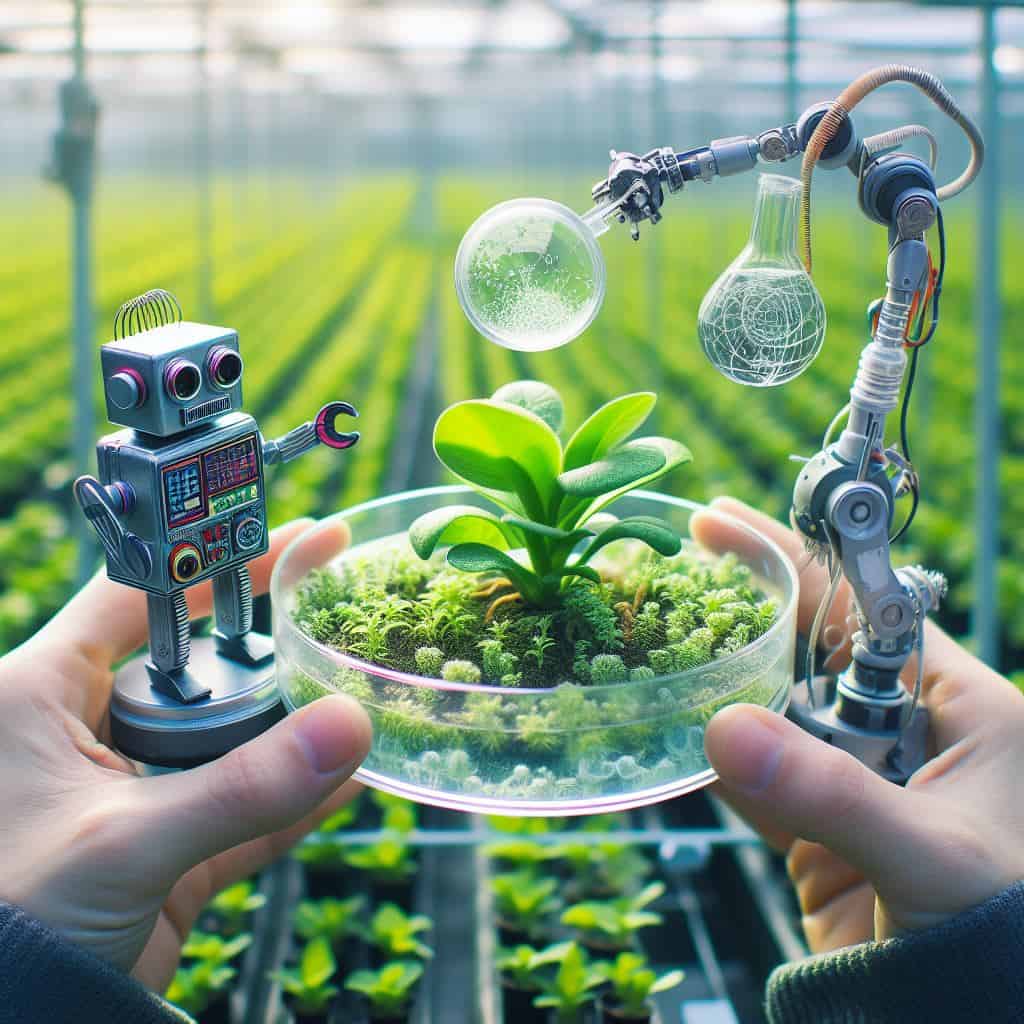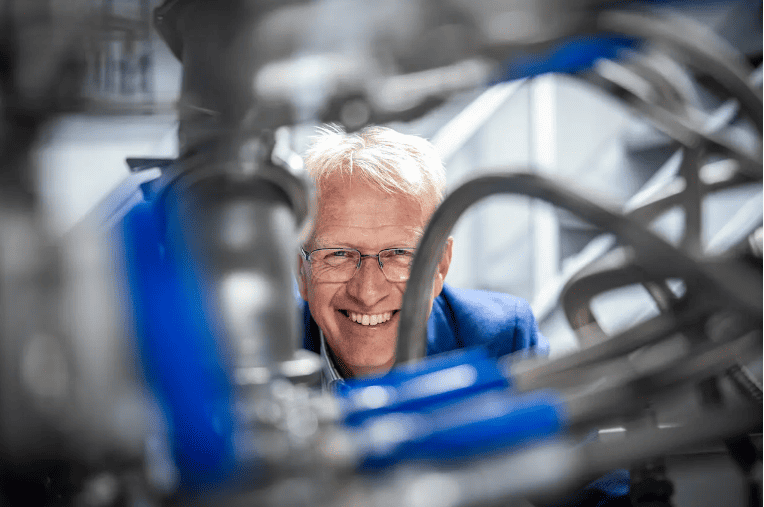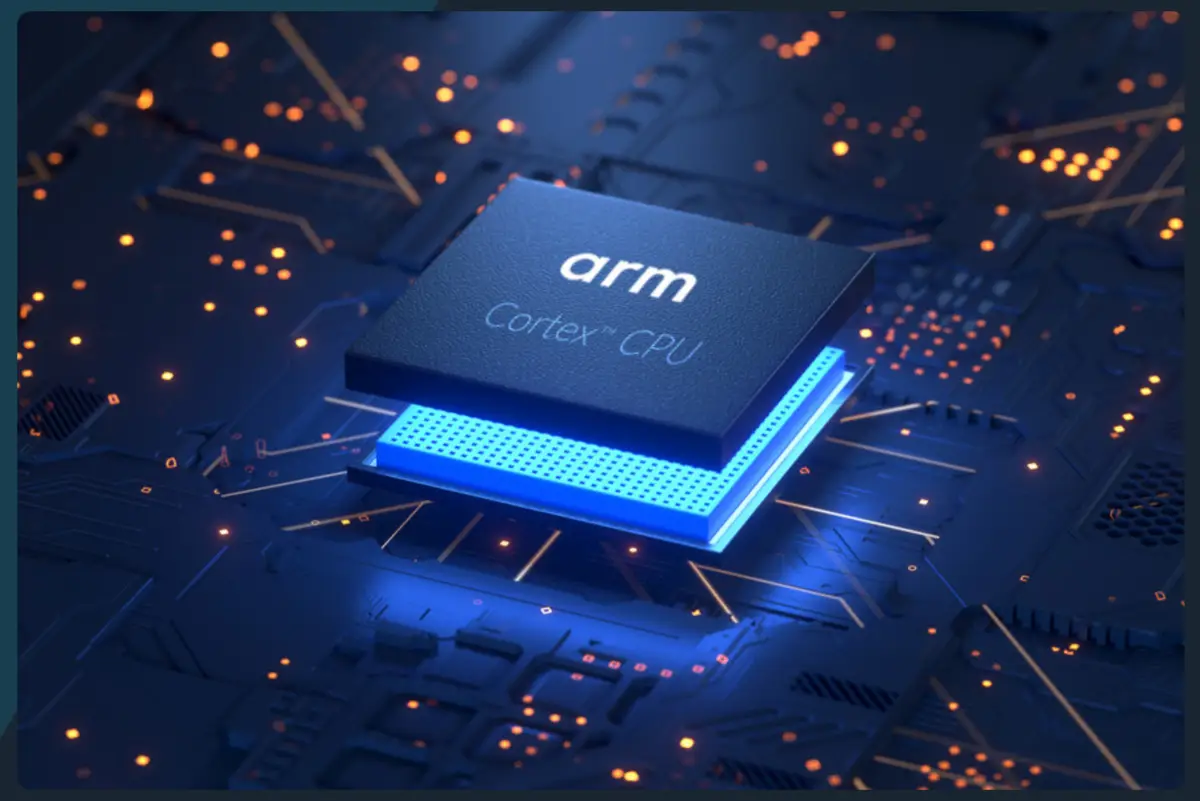
2021 is already over halfway and the conquering of the market with horticultural robots has yet to begin. But, the year is not over yet and the plan remains unchanged, says Harrie Schonewille, director of VDL ETG Projects. Robots in horticulture should replace the (now scarce) Eastern European contract laborers.
The CropTeq CDL 10 cuts an average of ten cucumber leaves per minute with one arm. A beta version of the robot is scheduled to enter the market in the fourth quarter. The current prototype has now reached the third and final test phase: the integral test. “We first test all the sub-systems separately under controlled conditions. There is always something going on in a greenhouse. A tropical day, a leakage or a blocked aisle, you name it.” And they don’t have time for delays at VDL. At the end of September, the company wants to present the most complete version possible of the Cropteq at Greentech. VDL would have liked to be further along already, but corona has thrown a spanner in the works here as well.
A set timeline for the coming period is difficult to establish. But next year Schonewille hopes to sell at least one hundred leaf-cutting robots. Before that happens, about ten Cropteqs will first take the Dutch cucumber greenhouses by storm at the end of this year. Schonewille expects that the investment by Dutch growers in the robot will be gradual. In countries like the United States, greenhouses are many times larger and investments are made much more suddenly. Investments by growers over there are consequently decisive for the success of the robotization of horticulture around the world.
Interaction between AI and mechanics
The development of the Cropteq has not been without challenges. Not least because it is a new product. “Mechanically, it is not a complex vehicle. Actually, it’s just a car that rides around a greenhouse. But the interaction between the mechanics, the AI and the plants does make it complicated. We are now working on the fourth generation of this effector, and we haven’t even ventured onto the market yet.” Add to that a constantly changing green environment, then the challenge is complete. VDL’s agri robot was initially developed to cut leaves from a cucumber plant. An important task, because with fewer leaves, the fruit has more room to grow which ensures that the crop yield is higher.

Cucumbers, a tricky crop
Not an easy job, because a cucumber grows up to seventy centimeters in a week. The Cropteq must therefore observe its surroundings in great detail and be able to recognize what it can ‘see’. When cutting leaves, the robot needs to see the difference between the stem, the axil of the stem (the point where the leaves are cut away) and the leaf. “We divide the stem and leaf stalks into segments and use these to build up a model of a plant. So the Cropteq can then recognizes the leaf not by its shape, but by its pixel structure. That way it can distinguish between the different parts.”
Moreover, the agri robot must also be able to recognize and respond to a variety of situations that take place in a greenhouse. For example, one aisle may catch more sun than another. The improved seed in one greenhouse grows a slightly different type of cucumber than in another. Or grower A uses a different method than grower B, so branches might be closer together or grow slightly differently.
The robot as data generator
An agri robot can offer a grower many advantages in a greenhouse, according to Schonewille. No more staff shortages, a better harvest and less chance of virus transmission inside a greenhouse. In addition, the robot also acts as a data generator. “Using all the data that the robot collects, growers are able to optimize and improve their processes. This is gold in the hands of growers.”
At the moment, VDL is still focusing on leaf cutting, but in the future they will also have effectors that can harvest cucumbers, spray with precision and detect and eliminate insects. Plenty of plans. Yet first of all, Schonewille wants to make this robot a success. As far as he knows, there are only a few companies dedicated to cucumber leaf picking. Moreover, almost all agri robots are still going through a development phase. So, Schonewille is not worried about the competition for the time being.
The world’s most fragile fruit
Whereas at VDL they are concentrating on cutting, work in the United Kingdom is being carried out on a picking robot that harvests the world’s most fragile fruit: the raspberry. “Our motto is: if our robot can pick raspberries, it can pick anything,” says Rui Andres, Chief Executive Officer at Fieldwork Robotics. To switch to strawberries, for example, the robot only needs a different type of gripper. T he fundamentals remain the same. “This sets us apart from the competition. As far as I know, they have to rebuild their entire machine when they switch crops.”

Right now one of these robots is riding around in a greenhouse somewhere in England. “The robot works for a few weeks, then we take it back to our workshop, make improvements and send it out into the field again.” Like VDL’s Cropteq, this robot is in the final, integral test phase.
The robot is slower than a contract laborer, but it can still compete with a workforce and it is cost-effective. Andres sees that much of the competition prefers to opt for speed, but Fieldwork Robotics has a different strategy. “The robot may not be fast, but it can work day and night and is extremely meticulous. Cost and quality are the two main priorities among growers, and by extension, ours as well. A careless robot will not make it into a raspberry grower’s greenhouse.” When it comes to picking robots for raspberries, there is precious little real competition. Andres knows all too well that strawberries are a more popular – and easier – crop for greentech companies.
Soft Robotics
Raspberries are held up by wires. This adds an extra level of difficulty for the picking arm, which easily gets tangled up in these wires. Martin Stoelen, founding director of Fieldwork Robotics, explains that soft robotics is used in two ways to prevent entanglements. “First, in the arm itself, to make sure the robot doesn’t destroy the surroundings. But also in the way the robot handles the fruit. We use soft components in all parts of our robot, so as not to bruise the raspberries. Another ingenious invention: the arms on the robot can work independently of each other. That way, you can get the arms to pick and sort fruit out for different supermarkets.” Proceeding with caution is always the number one priority, Stoelen admits. “Otherwise, growers won’t want our high-tech mechanics in their greenhouses.”
Fieldwork Robotics’ timeline is similar to VDL’s. Over the next few months, they are scaling up to about six robots in the field. Next year they are aiming to manufacture them on a much larger scale. If it is up to these companies, picking robots will truly conquer the horticultural world. So have a little more patience.







